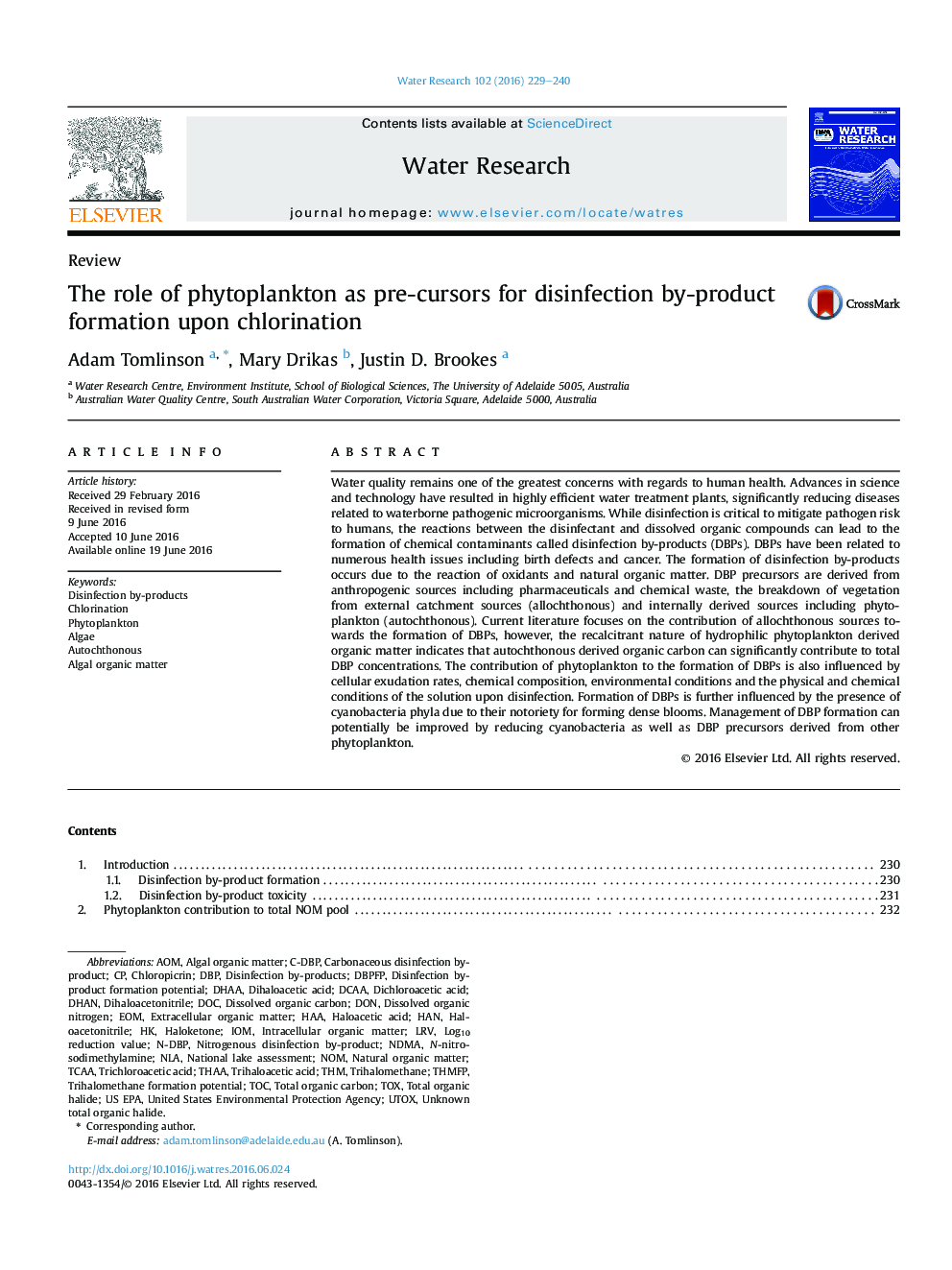| کد مقاله | کد نشریه | سال انتشار | مقاله انگلیسی | نسخه تمام متن |
|---|---|---|---|---|
| 4480832 | 1623066 | 2016 | 12 صفحه PDF | دانلود رایگان |
• Phytoplankton contains a significant proportion of hydrophilic organic matter.
• Hydrophilic NOM is more recalcitrant to conventional treatment, increasing DBP formation.
• Species population dynamics and continuous exudation contributes significantly to DOC pool.
• High protein content in some species has been linked to increased DBP formation.
• Nutrient reduction limits phytoplankton carrying capacity, aiming to reduce DBP precursors.
Water quality remains one of the greatest concerns with regards to human health. Advances in science and technology have resulted in highly efficient water treatment plants, significantly reducing diseases related to waterborne pathogenic microorganisms. While disinfection is critical to mitigate pathogen risk to humans, the reactions between the disinfectant and dissolved organic compounds can lead to the formation of chemical contaminants called disinfection by-products (DBPs). DBPs have been related to numerous health issues including birth defects and cancer. The formation of disinfection by-products occurs due to the reaction of oxidants and natural organic matter. DBP precursors are derived from anthropogenic sources including pharmaceuticals and chemical waste, the breakdown of vegetation from external catchment sources (allochthonous) and internally derived sources including phytoplankton (autochthonous). Current literature focuses on the contribution of allochthonous sources towards the formation of DBPs, however, the recalcitrant nature of hydrophilic phytoplankton derived organic matter indicates that autochthonous derived organic carbon can significantly contribute to total DBP concentrations. The contribution of phytoplankton to the formation of DBPs is also influenced by cellular exudation rates, chemical composition, environmental conditions and the physical and chemical conditions of the solution upon disinfection. Formation of DBPs is further influenced by the presence of cyanobacteria phyla due to their notoriety for forming dense blooms. Management of DBP formation can potentially be improved by reducing cyanobacteria as well as DBP precursors derived from other phytoplankton.
Journal: Water Research - Volume 102, 1 October 2016, Pages 229–240
